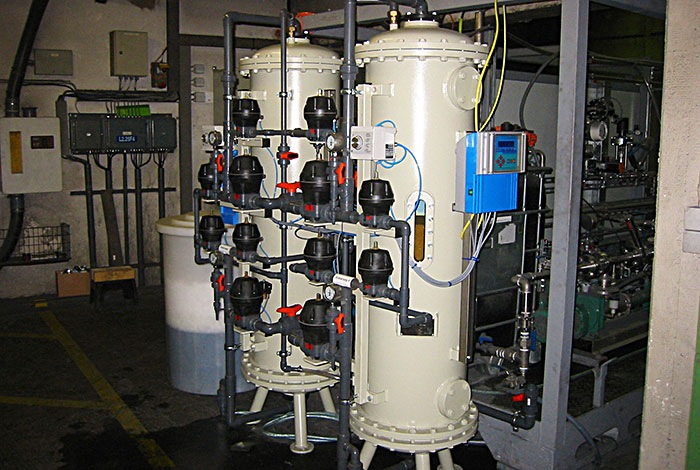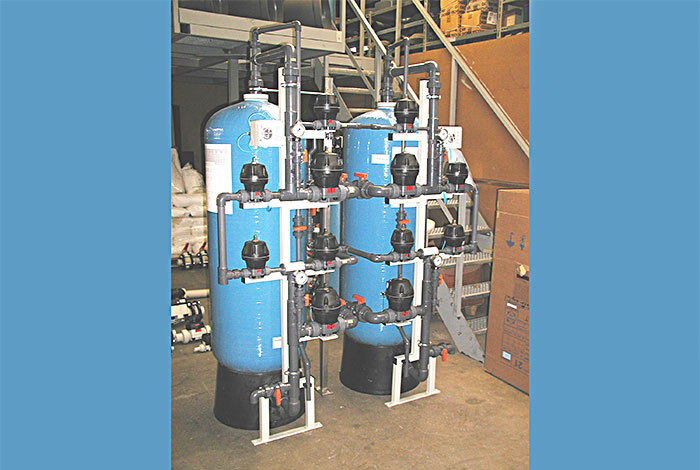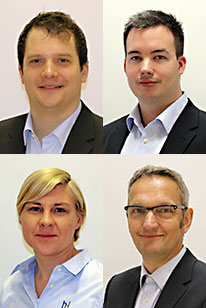Softening systems
The concentration of the elements calcium, magnesium, strontium and barium dissolved in water (also called alkaline earths) is designated as the water hardness. Strontium and barium occur only in very small quantities in normal water and therefore play only a subordinate and negligible role.
The earth alkalis calcium and magnesium are grouped together as hardeners.
With ion-exchange softening, the calcium and magnesium ions are exchanged for sodium ions.
For this purpose, the water is passed over a strongly acidic cation exchanger loaded with sodium ions. The ion exchanger can be regenerated by means of a common salt solution of an elevated concentration. The total salt content remains unchanged with this process.
The graphic shows the water components after softening by means of ion exchange.
Our softening systems are combined individually from standard components and adapted to the water to be softened. An industrially used system as a rule consists of two softening columns and a salt dissolving vessel with the corresponding accessories. We attach great value to the highest quality (manufacturing at the company headquarters in Gütersloh) and long service life at materials as well as fittings.
We would be pleased to provide further information on request. For data about the system design please refer to the PDF file in the download area.
Or even better: Call us.





